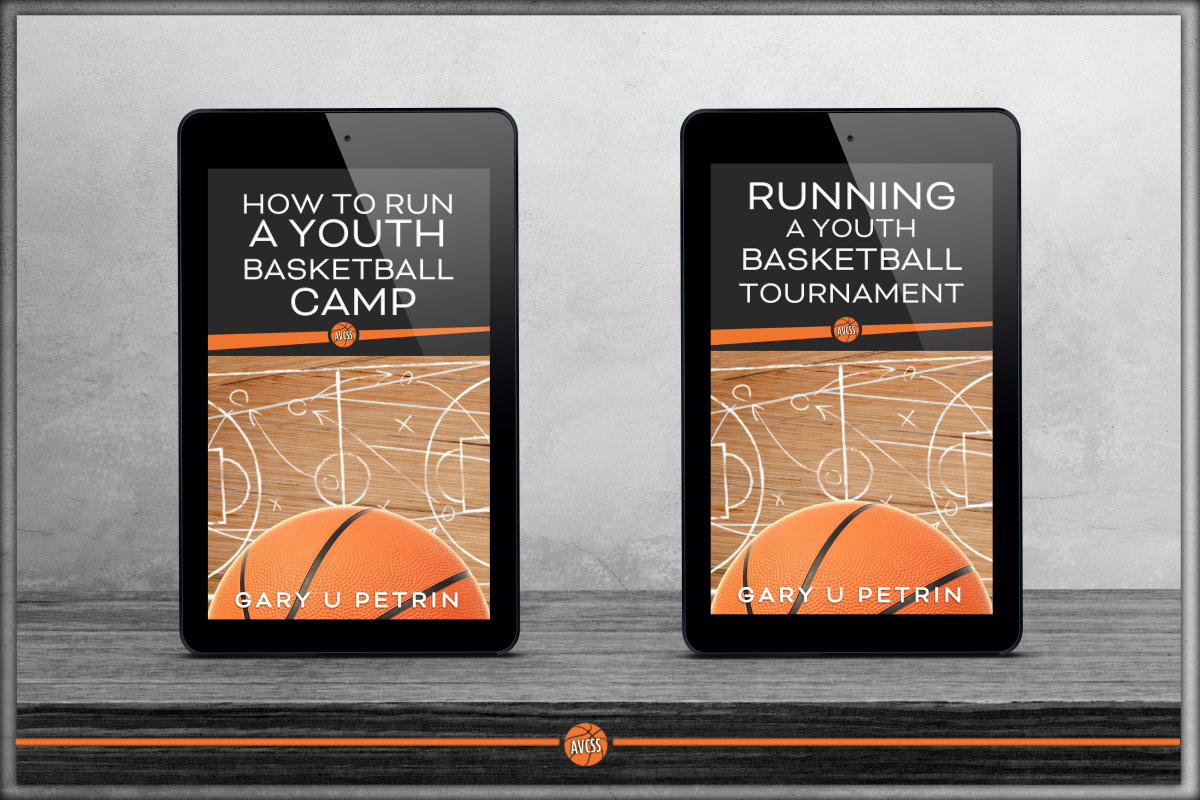Youth Basketball Tryouts and Cuts
Cutting a player from a youth basketball team is probably the “worst” part of coaching, but in reality it is the most essential responsibility. Selecting the best players so your team can be competitive should be a coaches highest priority (as long as the tryout process is a fair one). It may be easy for coaches just to simply tell players that they didn’t make the team, but check out this point of view on how cuts should be “handled” and an optional method on how to communicate cutting players!
Basketball Tryouts
The First Step:
Communication – Coach’s must ensure that parents and players understand that “cuts” will be made and then explain the process that will be used! The process a coach will use for evaluating players and how they will be making “cuts” should be outlined in detail. Good communication helps eliminate any guessing, confusion, and surprises. Explaining the process right from the start, then ask the parents to sign a separate copy for you. This will ensure that all parents acknowledge that they have received a copy. The memo should cover basic information that parents and players should be aware of, understand, and expect at tryouts. There is no easy way to cut a player, especially the younger players. The very least that a coach can do is to communicate the process of how they will be handling “cuts” right from the start!
Sample Tryout Memo to Parents – Handout
The Second Step:
Player Evaluation – Coach’s should have a method to document a player’s abilities and skill level during basketball tryouts. One way of evaluating players is to use the form below – the “Basketball Tryout Info / Scorecard” or simply make up your own evaluation form. The bottom line is that documenting player information will give you an accurate account of the talent of the players trying out for the team.
Using an evaluation process / form can accomplish many things:
a) Coach’s will have information on players abilities (speed, ball handling skills, etc.) that can assist them with decisions on which players make the team, and which players will be cut.
b) This information can also be used once the team is selected, to determine the fastest players, best shooters, etc…
c) If a parent does not understand why their child was cut – Documented information will be available to assist the coach with explaining how they came to this decision (if it ever gets to that point).
d) Shows that the coach used a “fair” system and process for selecting the team.
Note: The forms shown below allows for players to run a drill or skill test 2-3 times so results can be averaged out (allows players to make mistakes, but also allows them to recover). The Score Card Log Form is for coach’s that want to total up all the information on one form to see the all the players stats prior to deciding on cuts.
Bball Tryouts Scorecard Form – Handout
Bball Tryouts Scorecard Log Form – Handout
The Third Step:
Selecting the Team / Letting players know if they made the team or not? There are many methods of cutting players, some can be brutal, some embarrassing, but some can be fair. I prefer to use the “face to face” method for high school as it is a different atmosphere. Another method would be to just post who made the team on the gym door. But there really isn’t any feedback being provided to the players. The method that I started using for AAU basketball (after all the others proved to be agonizing) was to use the forms below.
All decisions are marked on the forms and sealed in an envelope with the players name on it. The envelopes are given to the players at the end of the last basketball tryouts. The players are told not to open the envelope until a parent picks them up and they are driving down the road!
If you decide to use this method – Do not allow the players to open the envelopes inside the gym – this can cause problems!
Made the Team:
The form below is used for these reasons:
a) Informs a player that they have made the team.
b) Informs parents about the fees, and information to bring to the first practice.
c) Informs the parents and players of the date / time / location of the first practice.
d) Includes how to contact the coach (phone #).
Did Not Make the Team:
The form below is used for these reasons
a) Informs player that they have not made the team.
b) Encourages work on skills checked, answers the question of “why did I get cut.”
c) Encourages the player to try again next season.
Did Not Make the Team Form – Handout
This form basically lets a player know that they need to work on certain skills. This is the reason for being cut. In order for them to make the team next year they should work on improving these skills. This type of form basically opens the door for them to come to basketball tryouts again next season.
Suggestion on how to handle “weaker” players:
Many times players will show up at tryouts that have very little basketball experience. And they really do not have the skills to make the team. When this occurs, coach’s should have a conversation with this player’s parent. Ask the parent what basketball experience their child has (Recreational Leagues, church leagues, etc). Explain that their child shows potential, but you really need to run some more skills tests. You would like to evaluate the player during the scrimmage part of the tryout. You are showing that you want to give their child every opportunity to show what they can do.
Explain to the parent what you are looking for so that they can watch for the same things. Let them know if you are concerned about the player getting hurt. You can also let the parent know that there is an option that you like to use for beginning players to avoid the “embarrassment” of being cut during the “cutting” process (basically, there is a way out of getting cut).
One Option: The parent and coach “mutually” agree on the player’s abilities. This can offer a way out for the player without getting cut. This agreement can occur at anytime – after the coach has finished evaluating the player (mostly after the parent has witnessed whether or not their child is ready for competitive basketball). The parent now has the option of allowing their child to continue (knowing that there is a good chance of being cut). Or has the option of bypassing the “cuts” process and explaining the situation to their child in their own way (damage control). In my previous experiences, the parent usually understood and wanted to avoid having their child upset by getting cut.
Conclusion
Youth Basketball Tryouts and Cuts – There is no process that will make cutting players easier for coach’s (or for the players being cut), but coach’s do have the choice of ensuring that the process they use is a fair one. Cuts can be potentially damaging to players (the younger players may never come back out and give it another try). Making “cuts” is not the most popular task of coaching. Unfortunately it is an integral part of participating in “competitive” youth basketball programs (or any competitive sports program).
Check out our database of video clips – Example Chair Shooting Drill
Basketball Tryouts
Info on Coaching Philosophy Here
Check out our New Downloads Now!
More Tryout Related Handouts Here



Hi this is Joe,and the information on this site was very helpful. Thank u.